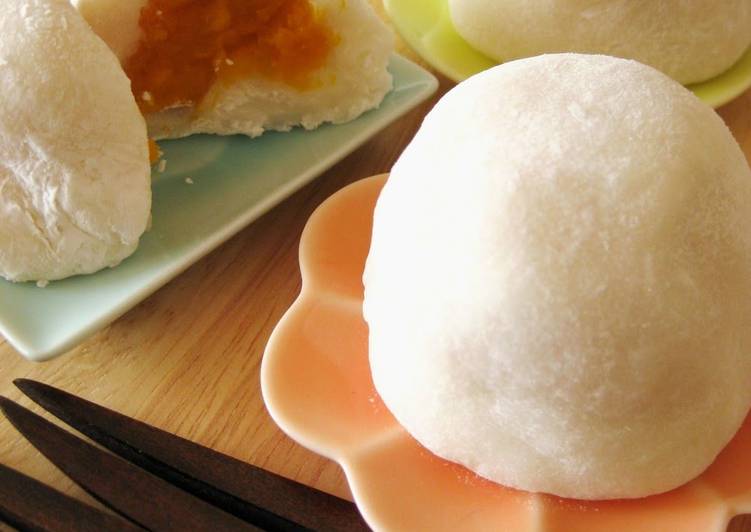Hello everybody, welcome to our recipe page, if you're looking for Kabocha Squash & Milk Daifuku recipe, look no further! We provide you only the perfect Kabocha Squash & Milk Daifuku recipe here. We also have wide variety of recipes to try.

Before you jump to Kabocha Squash & Milk Daifuku recipe, you may want to read this short interesting healthy tips about Tips For Living Green And Spending less Inside the Kitchen.
Until fairly recently any person who portrayed concern about the degradation of the environment raised skeptical eyebrows. Those days are over, and it seems we all comprehend our role in stopping and conceivably reversing the damage being done to our planet. The experts are agreed that we are not able to change things for the better without everyone’s active participation. These adjustments need to start occurring, and each individual family needs to become more environmentally friendly. Keep reading for some methods to go green and save energy, generally in the kitchen.
Refrigerators and freezers use a lot of electricity, particularly if they are not operating as economically as they should. In case you can get a new one, they use about 60% less than the old ones which might be more than ten years old. The appropriate temperature for food is 37F within the fridge and 0F in the freezer, and sticking to these will use less electricity. Another way to save electricity is to keep the condenser clean, for the reason that the motor won’t have to operate as often.
As you can see, there are lots of little elements that you can do to save energy, and also save money, in the kitchen alone. It is pretty straightforward to live green, all things considered. It’s concerning being practical, most of the time.
We hope you got insight from reading it, now let’s go back to kabocha squash & milk daifuku recipe. You can cook kabocha squash & milk daifuku using 7 ingredients and 9 steps. Here is how you do that.
The ingredients needed to cook Kabocha Squash & Milk Daifuku:
- Provide 100 grams Kabocha squash
- Use 1 tbsp ◆Sugar
- Get 1 tsp ◆Milk
- Prepare 2 pieces Pre-cut mochi cakes
- Get 50 ml ☆Milk
- Take 1 tbsp ☆Sugar
- You need 1 Katakuriko
Instructions to make Kabocha Squash & Milk Daifuku:
- Remove the seeds from the kabocha squash, cut into 2 cm pieces, and peel.
- Wrap the kabocha squash in moistened paper towels and put in a heat-proof dish. Cover with plastic wrap and microwave for 2-2.5 minutes at 500 W.
- The kabocha is cooked enough when you can easily pierce it with a bamboo skewer. With a fresh paper towel, remove excess moisture from the kabocha squash and from the bowl. Mash the kabocha squash while it's still hot.
- Add the ◆sugar and mix. If the kabocha squash seems dry, add the ◆ milk and mix well. Divide into 4 equal portions and shape into balls.
- Place the mochi rice cakes into a heat-proof bowl and add the ☆ingredients. Cover with plastic wrap and heat for 3 minutes in the microwave (for a 500 W microwave).
- Remove from the microwave and mix well with a spatula. At first, there may be a lot of liquid, but as you continue mixing, the mochi will gradually become smooth.
- When the mochi is smooth and starts to come together, roll into a ball and place it on a tray sprinkled with katakuriko. Dust your hands with katakuriko and divide the mochi into 4 equal portions.
- Stretch out one portion of mochi on the palm of your hand. Place the kabocha squash paste on top and wrap with the mochi. With the seam side down, place the daifuku on a plate. Make the remaining 3 daifuku the same way.
- Serve with tea and enjoy. There's lots of golden kabocha squash paste inside the daifuku… it looks just like a soft-boiled egg!
Kabocha squash is a round squash with dark green skin. It is a winter squash, harvested in the late summer or early fall. It has a hard rind and orange flesh. Also called Japanese pumpkin, kabocha is a favorite food in Japan but is grown around the world, including in South Africa, Thailand, and California. You can identify a kabocha squash by its shape, which is rounded and a little bit squat.
If you find this Kabocha Squash & Milk Daifuku recipe useful please share it to your good friends or family, thank you and good luck.

